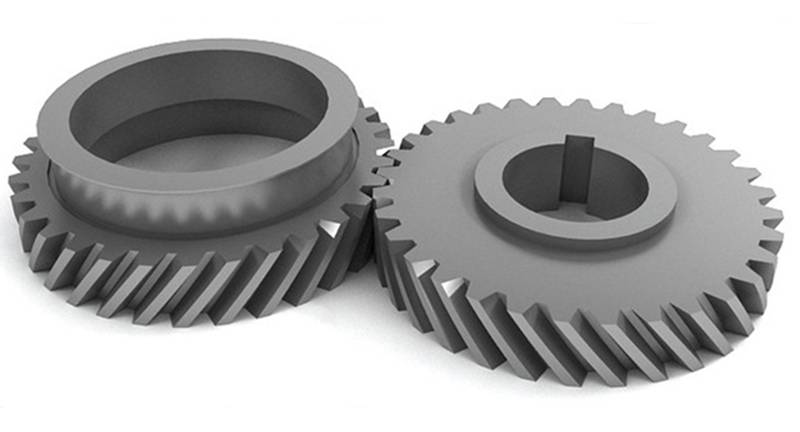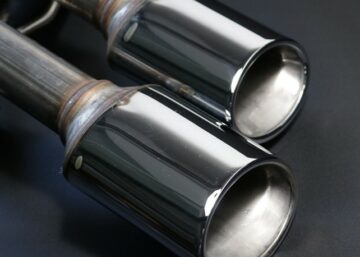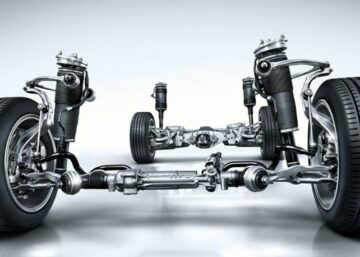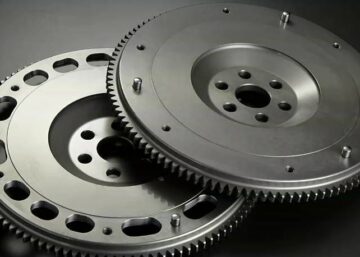Gears are mechanical components that are integral parts of products such as watches and automobiles that require the transmission of motion and energy. They have a rich history in product manufacturing and widespread industrial and commercial applications.
Although critical for many products, gears require using the right gear manufacturing process for quality, efficiency, etc. As a result, this article will talk about everything you need to know about gear production in part and product manufacturing.
Concept: What is Gear Manufacturing?
Gears are mechanical components that can transmit motion and power in different systems—for example, using spur gears in a watch and automotive gear. They have unique structures and majorly work under a certain degree of stress (depending on the product) while enacting their function. Aside from that, materials used in manufacturing gears must possess certain properties. As a result, gear manufacturing is highly specialized, and choosing the right process is critical.
Choosing the right manufacturing process depends on the type of gear, materials, and applications. Also, you have to consider the process’s reliability, tolerance, accuracy, and cost of operation.
Types of Gears and Their Applications
There are several ways to characterize gears. However, using the teeth profile is the best. Below are the five most common types of gear used industrially and commercially.
 Spur Gears
Spur Gears
Spur gears are the commonest gears known for their radially projecting straight teeth, with the teeth edge having a straight and parallel alignment to the axis of rotation.
These gears have little to no axial load and minimize mechanical losses. As a result, they are integral parts of aerospace components, automotive machines, and other industrial machines.
Spurs gears are the simplest ones to manufacture due to the less stringent tolerance. Therefore, all the gear manufacturing processes highlighted below can effectively manufacture one. However, they might need a good surface finishing process.
 Helical Gears
Helical Gears
Helical are similar to spur gears. However, their teeth are twisted along the cylindrical body, i.e., the teeth are not parallel to the rotation axis. Due to their teeth profile, they are only compatible with helical gears with the same angle of twist and teeth dimension. Furthermore, they produce less noise, have reduced impact load, and have a smoother operation.
Manufacturing helical gears is a little demanding due to the need for higher tolerance and accuracy. As a result, there is a limit to the number of suitable processes available.
 Bevel Gears
Bevel Gears
Bevel gears have a conical shape and are suitable for changing the transmission direction on intersecting shafts at a 900 angle. Moreover, you can also use other configurations. Common types of bevel gears include straight, spiral, miter, crown, and hypoid gears.
 Worm Gears
Worm Gears
Worm gear comprises the worm wheel and a screw-shaped gear. It does not offer much in terms of speed or efficiency. However, it gives a self-locking mechanism. They are common in aerospace, industrial machines, and automobile steering.
 Rack and Pinion
Rack and Pinion
The rack and pinion system has gear teeth that can mater with spur and helical gears. As a result, you can work on both parallel axes and at an angle. Rack and pinion systems are applicable in the automotive industries, weighing scales, etc.
Materials Suitable for Making Gears
There are many materials suitable for making gears. The first gear materials are woods and stones. However, technological advancements in gear manufacturing have made metals and plastics more common. The material combinations used in gear production are endless. Nevertheless, common materials used in producing gear are:
- Cast iron
- Steel
- Bronze
- Plastics
Choosing the Right Material in Gear Manufacturing
Choosing the right materials for gear production depends on the following factors:
1. Mechanical properties
The material should have great mechanical properties such as tensile strength, fatigue, durability, endurance, etc. However, this depends on the product you are working on. For example, plastics don’t need extreme mechanical properties in the right product.
2. Friction
Gears must mate, i.e., contact each other or other parts to function. As a result, the right material should have a considerable coefficient of friction. Furthermore, you can improve friction using the right post-processing mechanism.
3. Manufacturability
Also, the material must be highly manufacturable using the processes highlighted in the next section. This will reduce the cost of production and make production very efficient. Also, it will slightly improve precision and accuracy.
Each material has its properties. For example, cast iron has great tensile strength, while plastics are easily machined. If choosing the right material for your gear might be challenging, consider outsourcing to us at WayKern. We have an extensive material list and the right team to assure you about your choice of materials.
Different Gear Manufacturing Processes
There are many processes used for making gears in various industrial settings. However, the right choice depends on balancing product dimensions, cost, quality, and operations. Below are the common gear manufacturing processes you can use:
1. Die Casting
Die casting processes such as high-pressure die casting are suitable for making blanks/cylinders (gears without teeth) and gears having large diameters.
On the one hand, it is suitable for making blanks in an industry that desires mass production. However, this is a double manufacturing process since the blank will undergo another manufacturing process (most of the time, this is machining). On the other hand, it is the most cost-effective method for making gears with large diameters due to its ease of operation.
2. Forging
Forging is suitable for making metallic blanks and already-made gears. It involves heating and hammering the metal material until it forms the required part. Due to the heat treatment, the produced gear has better fatigue properties. However, they are not suitable for making gears with small sizes (suitable for gears within 6–10 ft diameter) or a thin sections.
3. Extrusion and Cold-drawing
Extrusion involves heating a metal profile and pushing it through a predetermined shape to give the required product. The heat treatment gives it better fatigue properties while the process has a lower initial tool expenditure.
Cold drawing is similar to extrusion. However, it does not push the metal. Instead, it pulls it through the die. Also, it does not involve heating. As a result, the metal still has unaltered mechanical properties.
4. Powder Metallurgy
Powder metallurgy, from its name, involves setting up powder and heating the setup. The setup must be compact to ensure the formed gear has better mechanical properties on cooling.
Powder metallurgy is efficient, simple, and suitable for small gears. However, it is unsuitable for large gears because they require bigger setups. Aside from that, the gear manufacturing process has a high setup cost making it unsuitable for low-volume production.
 5. Gear Machining Process
5. Gear Machining Process
Machining comprises several processes suitable for manufacturing gears from scratch or working on already made gear blanks. They are divided into traditional and CNC machining, with the latter being better for gear cutting and manufacturing due to their versatility. Below are the common methods used in most industries.
Gear Hobbing
Hobbing is a gear cutting process that involves using a hob to cut the material into the desired shape and size. It is a quick process suitable for efficient production rate and working with gear blanks made from processes such as die casting. However, it is only suitable for making external spur and helical gears and requires more skills and precision.
Gear Shaping
Shaping is an advanced manufacturing process suitable for making gears incompatible with hobbing. It involves using a cutter having a pinion, rack, or single point shape to cut the blank to the required shape. As a result, it is suitable for making internal and external gears.
Gear Broaching
Broaching involves using a multi-teeth tool with embedded cutters to cut a blank. It is the quickest gear machining process and is suitable for making incrementally deep and embedded cuts without losing accuracy and precision. Furthermore, it is suitable for both internal and external teeth.
Gear Milling
Milling is a gear machining method many automotive gear manufacturers use for making gear teeth due to its versatility. Moreover, it has become more accurate with CNC milling machines. As a result, CNC milling is the most common gear machining method industry-wise. Nowadays, most rapid prototyping companies like us help businesses manufacture gears using multi-axis CNC milling machines. As a result, there is an assurance of efficiency, quality, and compatibility with complex gear designs.
How to Choose the Right Gear Manufacturing Process
Choosing the right process for gear production can only come from understanding the gears you want, the ease of operation of available processes, budget, complexity, and size of gears. The best option when looking for the right process is to talk to rapid prototyping companies such as ours. Our expert team of engineers can analyze the job requirement and advise you.
Gear Manufacturing Post Processing Options
Surface finishing options for gears can be for functional or aesthetic purposes. Aside from that, they also depend on the process. Below are the most common post-processing options used in gear production.
1. Grinding
This is the commonest surface finishing process for gears. It involves grinding the gear surface intermittently or continuously until it has a smooth finish. Aside from that, it is suitable for functional correction such as a change in dimension.
2. Lapping
Lapping involves using small abrasive particles to smoothen the gear’s surface at a low/medium speed. It is the right surface finishing process to achieve a high dimensional tolerance for gears requiring high precision. As a result, it is commonly used for processes such as die casting.
3. Honing
Honing is another abrasive surface finishing process suitable for functional and aesthetic purposes. It involves using a small abrasive grinding stone or wheel to reduce the gear’s geometry or make it smooth.
4. Shaving
Gear shaving is a surface finishing process that involves removing small metal parts from a gear. It is suitable for making a gear smoother. Aside from that, it is applicable in correcting gear teeth in terms of spacing, angle, profile, concentricity, etc. However, its disadvantage is its high cost.
Conclusion
Gear manufacturing is highly specialized due to gears’ complexity, functions, properties, and requirements. Currently, there are many gears manufacturing processes, and this article discussed the most common processes you can use industrially or commercially.
Are you looking for a supplier for your gear manufacturing project? WayKen is an ISO-certified company with a team of highly experienced professionals who provide outstanding services at very competitive prices. Whether you need automotive gears or precision components, our machining capabilities meet your all needs. Contact us today to get a quote.
FAQs
Which machining process has the highest accuracy in gear production?
CNC milling is the most accurate process used in gear production. It involves using multi-axis milling machines suitable for making both internal and external teeth with the highest accuracy. The process is suitable for making all types of gear.
What are the common materials used in the gear machining process?
The most common material used in gear manufacturing is cast iron. It is hard, ductile, malleable, and machinable. Other common materials include steel, copper, aluminum, and plastics.
Which is the fastest gear production method?
Broaching is the fastest method. It involves using a multi-tooth cutting tool or broach to cut the blank into the required shape and size.




